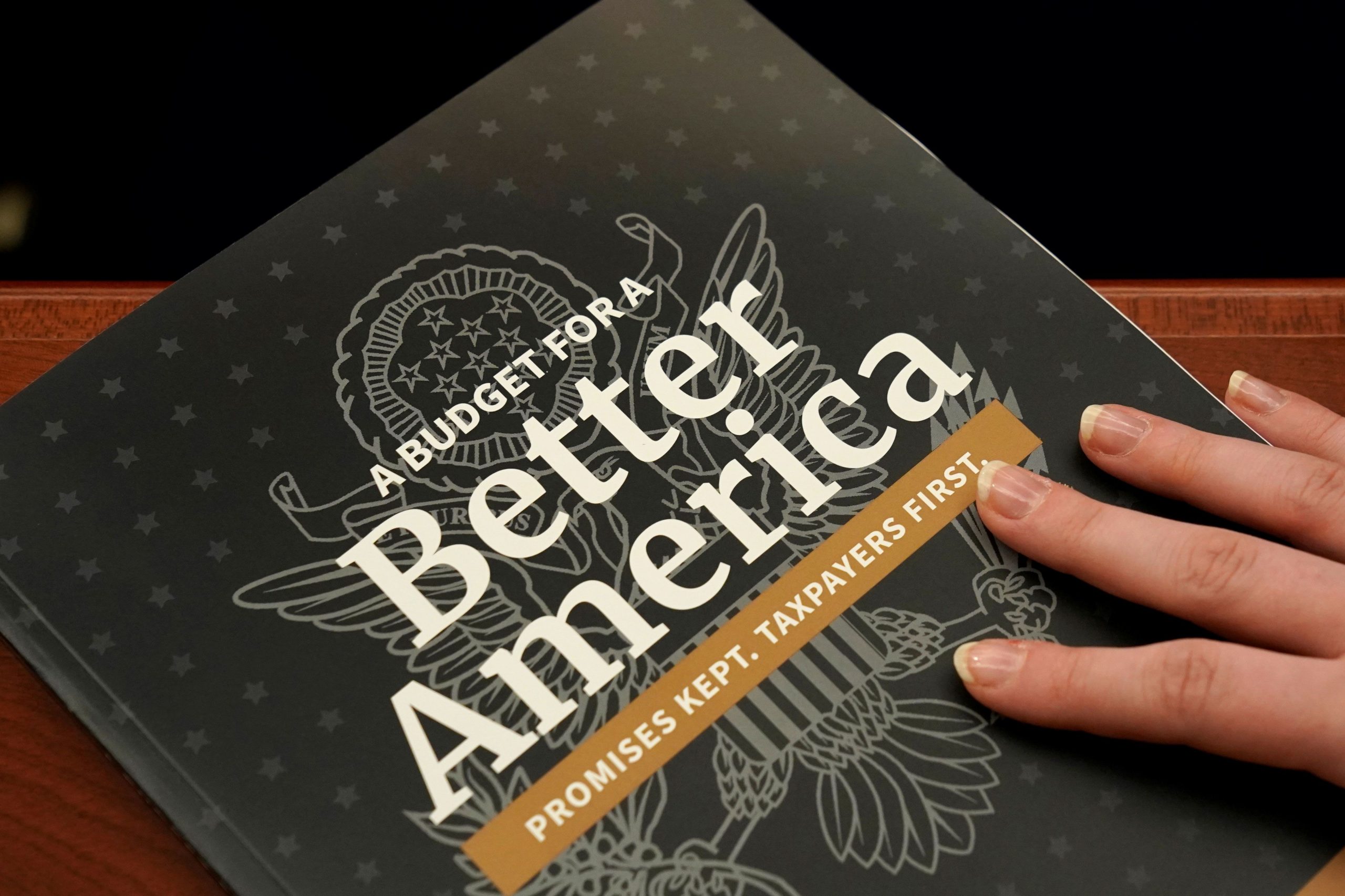Federal deficits are expected to swell to higher levels over the next decade than previously expected, the nonpartisan Congressional Budget Office said in a new report Wednesday.
The CBO also said that President Donald Trump’s tariffs are projected to shrink gross domestic product by 2020, and warned that further tariff hikes could stifle economic growth.
The U.S. budget deficit is expected to hit $960 billion in 2019, and average a whopping $1.2 trillion per year between 2020 and 2029, according to the CBO’s look ahead at the U.S. budget and economic outlook over the next decade.
The new deficit projection for 2019 rose $63 billion from the last report, which came out in May. The CBO says this is mainly because of the massive new budget deal, which passed both houses of Congress and was signed into law by Trump in early August.
“The nation’s fiscal outlook is challenging,” CBO Director Phillip Swagel said in the report. “Federal debt, which is already high by historical standards, is on an unsustainable course.”
Swagel said that the debt is projected to rise even higher after 2029, due to the aging of the U.S. population, growth in health-care spending and rising interest costs.
The White House did not immediately respond to CNBC’s request for comment on the new CBO report.
Trump regularly touts the strength of the U.S. economy and the stock market, suggesting it be used as a barometer for the success of his own presidency and a case for his reelection in 2020.
The president has pushed back on reports that an economic slowdown could be on the horizon, claiming that Democrats and the media are trying to create a recession by worrying investors.
But Tuesday afternoon in the Oval Office, Trump offered both fiscal and monetary policy proposals to give the economy a boost. He once again trashed Federal Reserve Chairman Jerome Powell and reiterated his call for a full percentage point cut in interest rates. He also floated the possibility of a payroll tax cut.
Trump’s remarks would appear to clash with Swagel’s prescriptions for addressing the U.S. fiscal outlook. “To put it on a sustainable course, lawmakers will have to make significant changes to tax and spending policies,” such as increasing revenues, reducing spending or a combination of both, Swagel said.
And while his trade war with China rages on, the CBO also says that the tariffs imposed under Trump since January 2018 are expected to make U.S. GDP roughly 0.3% smaller than it otherwise would have been.
“Trade policies” are weighing on economic activity, “particularly business investment,” the CBO said.
The slowdown in growth in 2019 largely stems from weaker growth in business investment, according to the report.
Tariffs affect business investment “by increasing business’ uncertainty about future barriers to trade and thus their perceptions of risks associated with investment in the United States and abroad,” the CBO said.
“If trade barriers rose higher or concerns about such developments increased, domestic investment and output could be slower than we project,” the agency added.
The CBO’s projections come as the Trump administration gears up to slap new tariffs on billions of dollars’ worth of Chinese imports. Trump has already imposed 25% tariffs on about $250 billion in Chinese goods, and has vowed to apply 10% duties to roughly all remaining Chinese imports by mid-December.
Some of those tariffs will go into effect Sept. 1, while other were recently delayed until Dec. 15 to avoid harming U.S. consumers during the holiday season, according to the president.
Beijing has retaliated by taxing about $110 billion in U.S. imports, and more recently by announcing that it would no longer buy U.S. agriculture products.
Here’s what else the CBO’s report says:
- Real GDP is projected to grow to 2.3% in 2019
- But after 2019, annual output growth is expected to slow down to an average of 1.8% through 2029 — lower than the long-term historical average
- “That slowdown occurs primarily because the labor force is expected to grow more slowly than it has in the past,” the CBO says
- Federal debt held by the public is projected to grow to 95% of GDP in 2029 from 79% in 2019. The 2029 debt projection will be “its highest level since just after World War II”
- The recently passed budget deal is expected to add roughly $1.7 trillion to the cumulative deficits between 2020 and 2029
- The expected increase in deficits is partly offset, however, by a $1.1 trillion net reduction in the CBO’s projections of interest costs over the following 10 years
- That’s mostly because the CBO revised its forecast for interest rates downward from the prior report, which lowered its projections for net interest spending
— CNBC’s Jacob Pramuk contributed to this report.
Join to ourTrading at home group


 Signal2forex.com - Best Forex robots and signals
Signal2forex.com - Best Forex robots and signals




